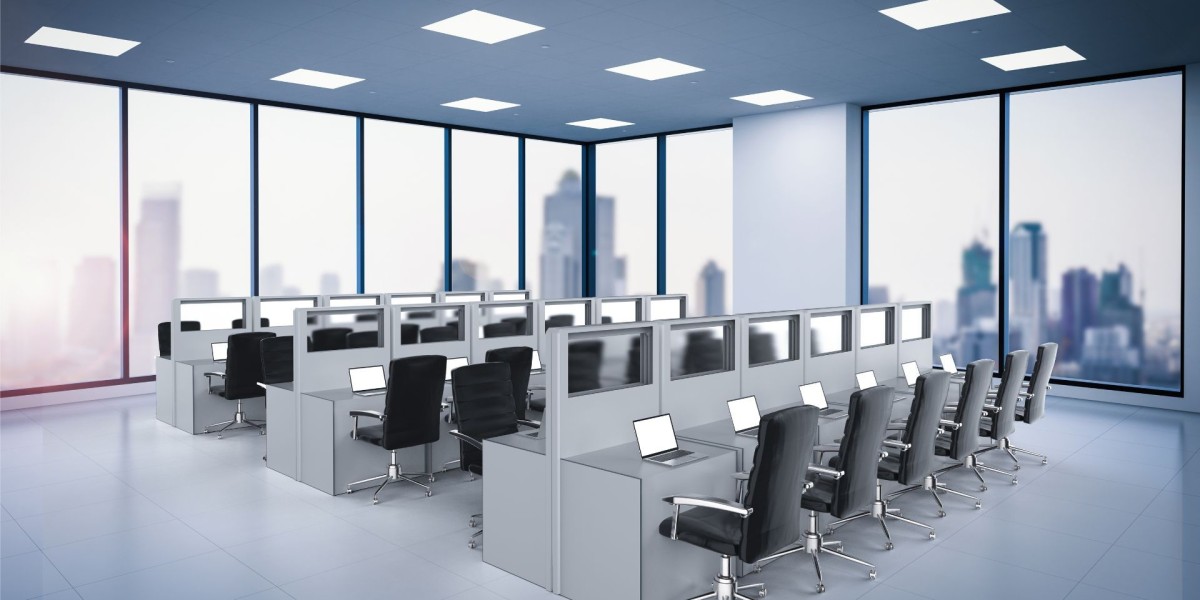The modern workplace is constantly evolving, driven by technological advancements and shifting work culture. To keep up, businesses must adapt their office designs, focusing on innovative workstations that cater to employees' changing needs. This blog explores nine key trends in office workstations that are shaping the future of workspaces.
Height-Adjustable Workstations
Height-adjustable desks, also known as sit-stand desks, are gaining popularity due to their versatility and health benefits. These workstations allow employees to alternate between sitting and standing, improving posture and reducing the risks associated with prolonged sitting. They are ideal for promoting workplace wellness and accommodating diverse work styles.
Incorporating these desks into your office design ensures flexibility and enhances employee satisfaction. As workspaces increasingly prioritize health, this trend is here to stay. By investing in height-adjustable options, companies can make their office workstation setups more ergonomic and appealing.
These desks also offer improved productivity, as employees can move around to alleviate fatigue, which helps maintain energy and focus throughout the day. Furthermore, height-adjustable workstations support a variety of tasks, whether employees need to collaborate, focus on deep work, or engage in virtual meetings. The long-term health benefits, such as reduced back and neck pain, make them an essential investment for modern office environments.
Modular Workstations for Dynamic Spaces
Modular workstations are designed to adapt to changing office layouts and team sizes. These flexible setups include components that can be rearranged or expanded, making them perfect for businesses anticipating growth or reorganization.
With modular designs, companies can optimize space utilization and easily accommodate new team members or project-specific needs. This trend reflects the increasing demand for agility in workspace design, ensuring that a workstation for office environments remains practical and future-ready.
Moreover, modular workstations can easily be customized to suit different work styles, promoting both collaboration and individual productivity. As teams evolve and office needs shift, modular solutions offer seamless transitions, reducing the need for constant office redesigns.
Their versatility also allows businesses to make quick adjustments during peak times or special projects without significant disruption. This adaptability ultimately makes modular workstations a smart investment for growing companies that need to stay agile
Integrated Technology for Smart Workspaces
The integration of smart technology into office workstations is transforming how employees work. From desks equipped with wireless charging to built-in connectivity solutions, these setups streamline daily tasks and enhance productivity.
As remote work and hybrid models become more prevalent, technology-equipped workstations bridge the gap between physical and digital workspaces. Investing in these innovations future-proofs your office, ensuring employees have the tools they need to excel.
Additionally, these innovations can improve collaboration by incorporating features such as interactive screens or video conferencing tools directly into the workstation setup, making remote and in-office teamwork more seamless. As technology continues to evolve, offices that prioritize smart workstation integration will be better equipped to adapt to future demands and challenges.
Sustainability in Workstation Design
Sustainable furniture is no longer a niche choice—it’s becoming a priority for environmentally conscious businesses. Office workstations made from recycled or eco-friendly materials help reduce carbon footprints while maintaining quality and aesthetics.
This trend reflects the growing emphasis on corporate social responsibility. Choosing sustainable designs not only aligns with eco-friendly goals but also resonates with employees and clients who value sustainability in the workplace.
Sustainable workstation designs also promote long-term cost savings by reducing the need for frequent replacements and maintenance. Materials like bamboo, reclaimed wood, and metal components that can be recycled or repurposed offer durability while minimizing environmental impact.
By opting for energy-efficient lighting and reducing waste in the production process, companies can create a more sustainable office environment. This commitment to sustainability also enhances the company's reputation, attracting employees and clients who prioritize environmental responsibility in their business relationships.
Collaborative Workstations for Teamwork
Collaboration is a cornerstone of modern office culture, and workstations designed to foster teamwork are in high demand. Open layouts and shared desks encourage communication and innovation, making them essential for creative and project-driven teams.
These workstations can be combined with private spaces for focused tasks, striking a balance between collaboration and concentration. Designing an office workstation to support both dynamics ensures a well-rounded and productive environment.
Focus on Biophilic Design
Biophilic design incorporates natural elements into office spaces to improve employee well-being. Workstations featuring wood finishes, plant integrations, and natural light exposure contribute to a healthier and more inviting work environment.
Studies show that biophilic designs enhance creativity, reduce stress, and increase overall productivity. Incorporating these elements into your workstation for office setups can create a space where employees feel more connected to nature.
Personalization and Customization
Modern workstations are increasingly tailored to individual needs and preferences. Customizable desks with adjustable features and modular components allow employees to create a workspace that suits their unique work habits.
This trend underscores the importance of employee comfort and satisfaction. By offering personalization options, businesses can boost morale and ensure that every office workstation caters to the specific needs of its user.
Compact Workstations for Small Spaces
As urban office spaces shrink, compact and efficient workstations are becoming essential. Designs that maximize functionality while minimizing footprint are perfect for small offices or shared workspaces.
Foldable desks, integrated storage, and minimalist layouts are examples of how compact workstations can maintain productivity without overcrowding. A well-designed workstation for office use ensures optimal use of limited space while maintaining a professional atmosphere.
Workstations for Hybrid Work Models
With hybrid work models becoming the norm, office workstations must accommodate both in-office and remote employees. Hot desking, shared workstations, and adaptable layouts support employees who alternate between home and office.
These designs foster collaboration and ensure seamless transitions for hybrid teams. By embracing this trend, businesses can create a flexible and inclusive environment that reflects the future of work.
Conclusion
Innovative workstation trends are redefining the way offices operate, prioritizing flexibility, technology, and employee well-being. By staying ahead of these trends, businesses can create workspaces that attract top talent and drive productivity.
Whether incorporating smart technology, modular designs, or sustainable materials, every office workstation should be tailored to meet the demands of a modern workforce. As you plan your next office upgrade, focus on trends that future-proof your workspace and ensure long-term success.








